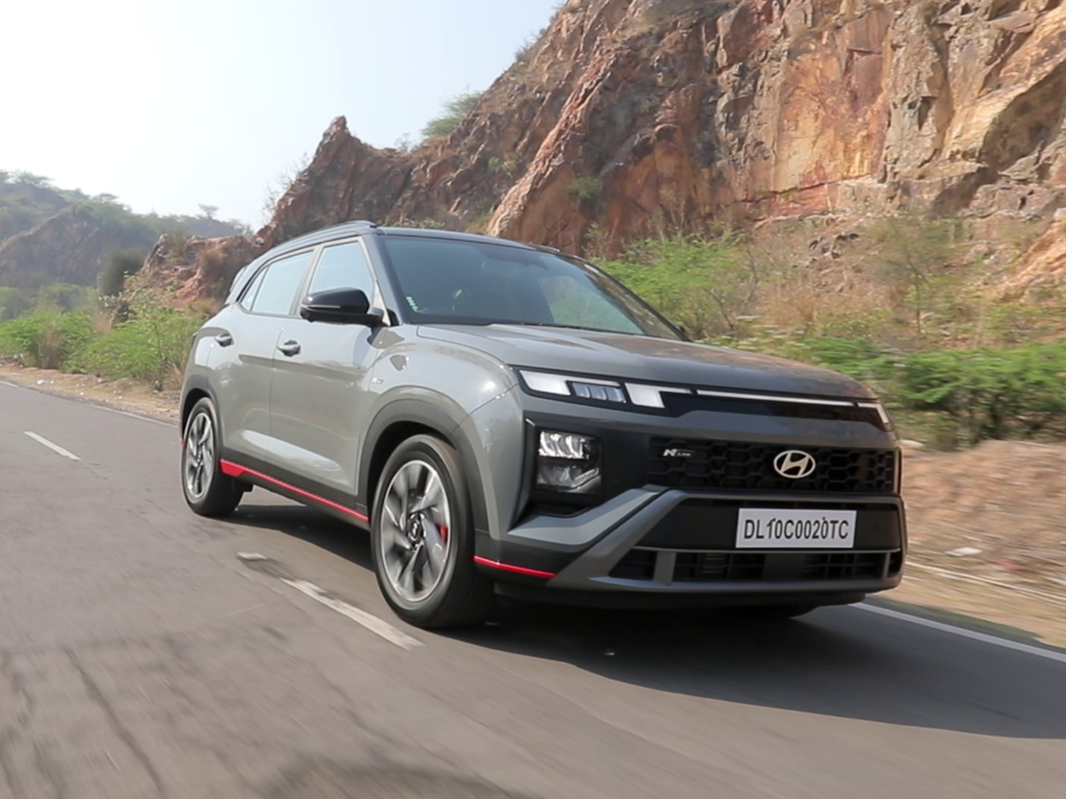If you are in the market to buy the Hyundai Creta, well, you cannot get a more exciting window! That’s because Hyundai launched the facelift of the second-generation Creta in India not too long ago (which has already garnered more than 80,000 bookings!), and now, the SUV has joined the brand’s coveted N Line range. Right before its launch, we got a chance to sample the Creta N Line, and it gave us a good insight into what the N Line treatment brings to Hyundai’s best-seller.
However, before delving deeper into its first impressions, I must confess – I have never been a fan of Hyundai India’s N Line range, which, before the Creta, consisted of the i20 and the Venue. In the case of the i20, the standard hatchback looks sporty enough – the N Line treatment simply feels like overkill, much like dipping a Jalapeño pepper in chilli sauce. In the case of the Venue, I feel its design does not support the N Line’s sporty credentials. It’s like slapping a Van Gogh with some neon lights. Unnecessary. Hands down, the Creta facelift looks better than the original second-generation model…by miles. Yet, it’s safe to say it’s still not the best-looking car in the segment. However, in the case of the Creta N Line, I’m happy to report that the trick has finally worked.
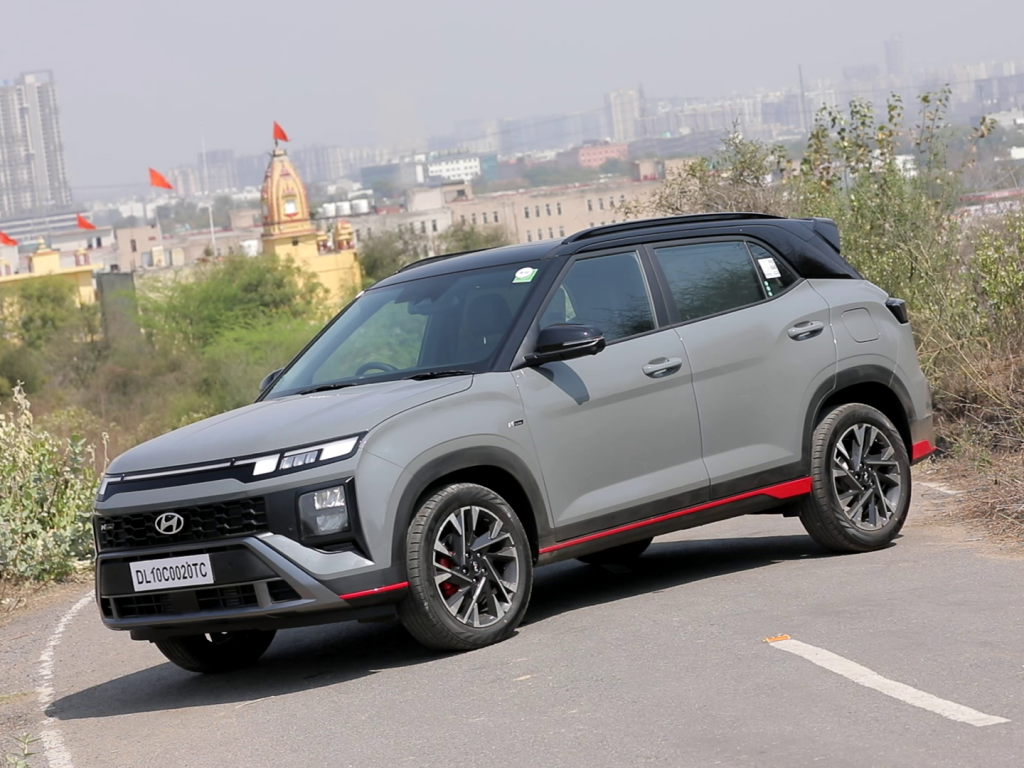
My first look at the Creta N Line was in its new matte-finish Titan Grey shade, and it left me pleasantly surprised. The N Line kit – consisting of new jazzed-up bumpers and a more elegant-looking front grille, 18-inch diamond-cut wheels, popping red-coloured accents, front & rear brake callipers finished in the same red, and a couple of ‘N Line’ badges peppered around the vehicle – works really well to enhance the original design, and it urges you to open the door to check out the car further.
Inside, the signature all-black theme makes the cabin look really smart, but the bright red accents on the dashboard, along with the red ambient lighting, look a bit too over the top. The only red bit in the cockpit that works is the contrast stitching. N Line-specific elements like the gear selector, steering wheel, and the debossed ‘N’ logos in the front seatbacks look pretty cool and add a dash of youthfulness to an otherwise elegantly laid-out cabin.
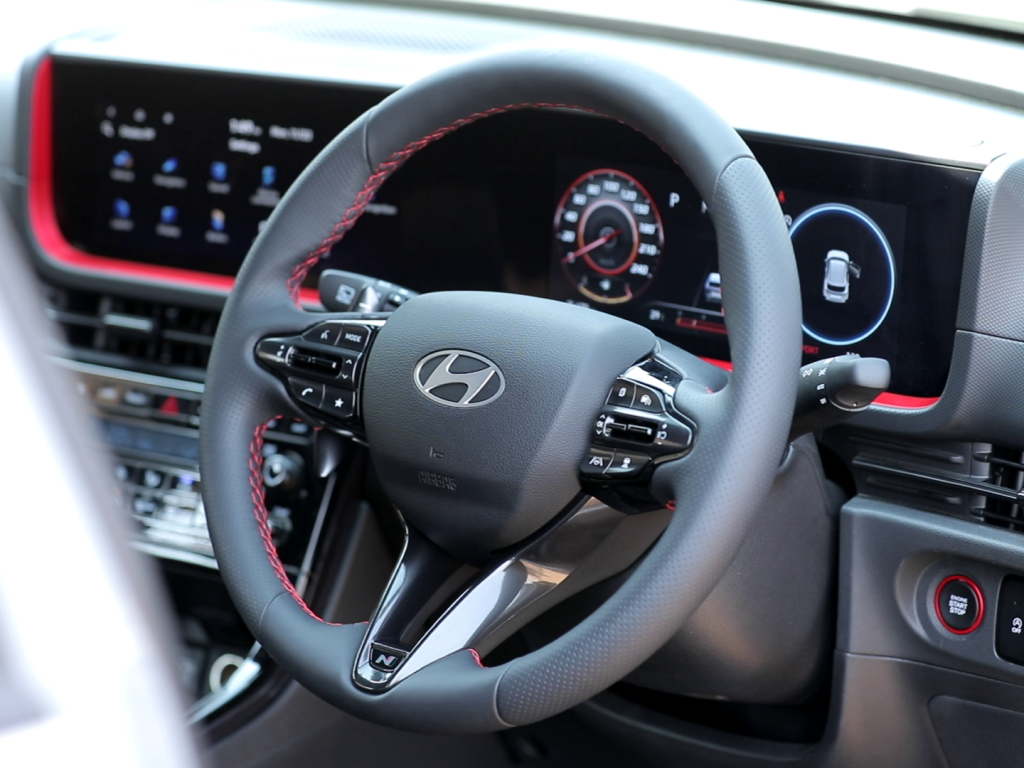
It’s worth mentioning that the black plastic inside the cockpit, which is abundant, looks fine until you run your hand on it or give it a good, old-fashioned tap – much too hard. It’s a bit of a downer to see cost-cutting of this kind in this segment, especially if you opt for the top variant that costs north of ₹20 lakh. Perhaps it makes up for these shortfalls with its drive experience, and it does.
From behind the wheel, the most impressive aspect of the Creta N Line has to be its ride quality. We drove the car on varying surfaces – on good roads, some bad ones, some fast ones, and a few twisty ones. Irrespective of the surface change, the Creta N Line delivered an impressive ride quality – the car remained settled at high speeds, did not hesitate to take on the twisties, and absorbed bad surfaces without breaking a sweat. It can be because the N Line version gets a slightly stiffer suspension setup (how exactly it has been made stiffer was not revealed to us), and from the driver’s seat, at least, it feels pretty much flawless – a very good balance between firm and soft.
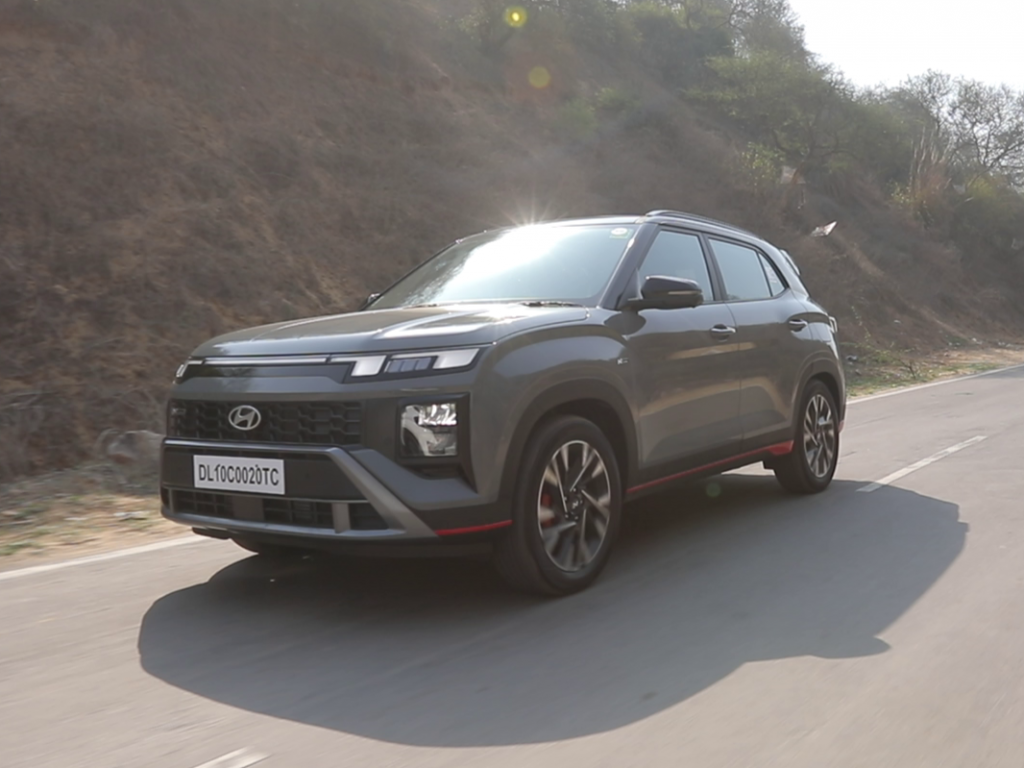
Unfortunately, just as you start enjoying this plus point, the elephant in the room does not go unnoticed for too long – Hyundai’s infamous DCT gearbox. While it’s not annoying to use at high speeds, it certainly is at low speeds. For some reason, at crawling speeds, the gearbox forgets its ONLY job of changing gears at the right time, and when they do change, a bit of head nod is inevitable. Thankfully, help is at hand, as the Creta N Line is available with an old-school six-speed manual from the get-go. The manual should be your preferred pick if you wish to extract and enjoy the ample performance of the 1.5-litre turbo petrol unit.
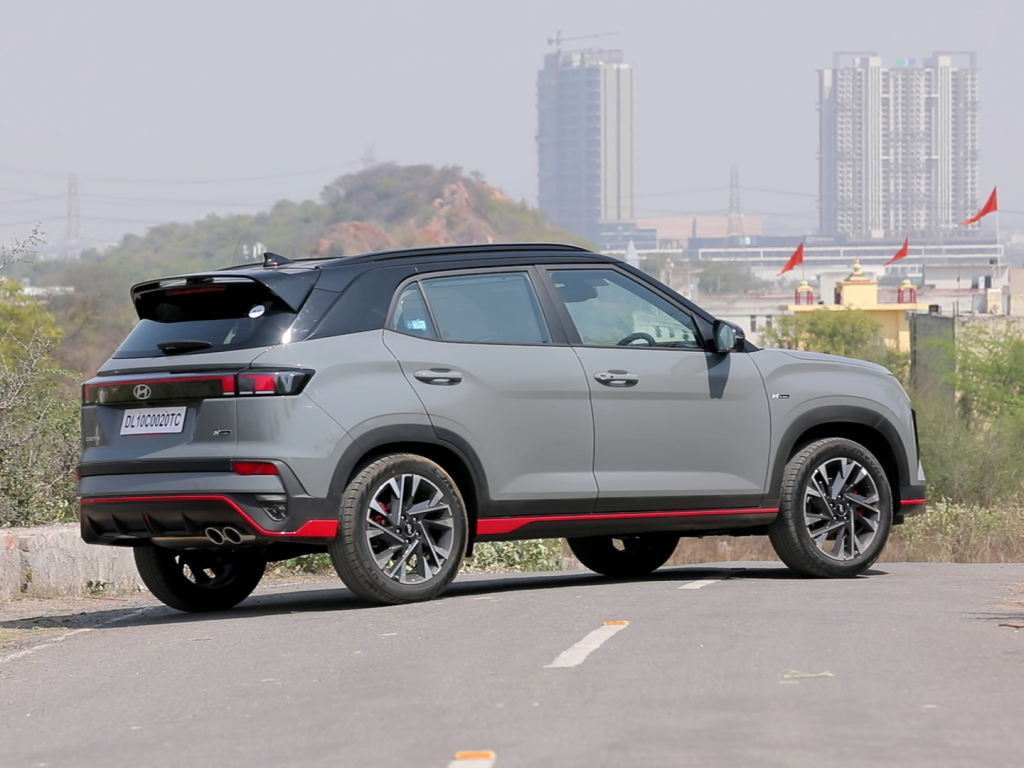
The Creta N Line gets two trims – the N8 and N10. While both are available with the choice of a manual or an automatic gearbox, the N10 does offer quite a few more bells & whistles. For example, the N10 variants come equipped with a driver-side power window with auto up/down safety, an electro-chromic inside rear-view mirror with switches for the telematics, front parking sensors, ADAS safety features, red ambient lighting, an 8-way powered driver’s seat, rear seat headrest cushions, a voice-enabled smart panoramic sunroof, and ventilated front seats.
That’s not all. Infotainment-wise, the N10 variants get a larger 10.25-inch AVN system, a fully digital instrument cluster of the same size, and an 8-speaker Bose audio setup. Hyundai has also reserved its Bluelink connected car features for the top trim.
Funnily, a signature N Line feature – the dual-camera dashcam – comes as standard on the N8 trim and not on the N10. But if these extra creature comforts are not your cup of tea, thankfully, both trims offer an identical exterior and the same colour options. Hopefully, you can take a hint from this.
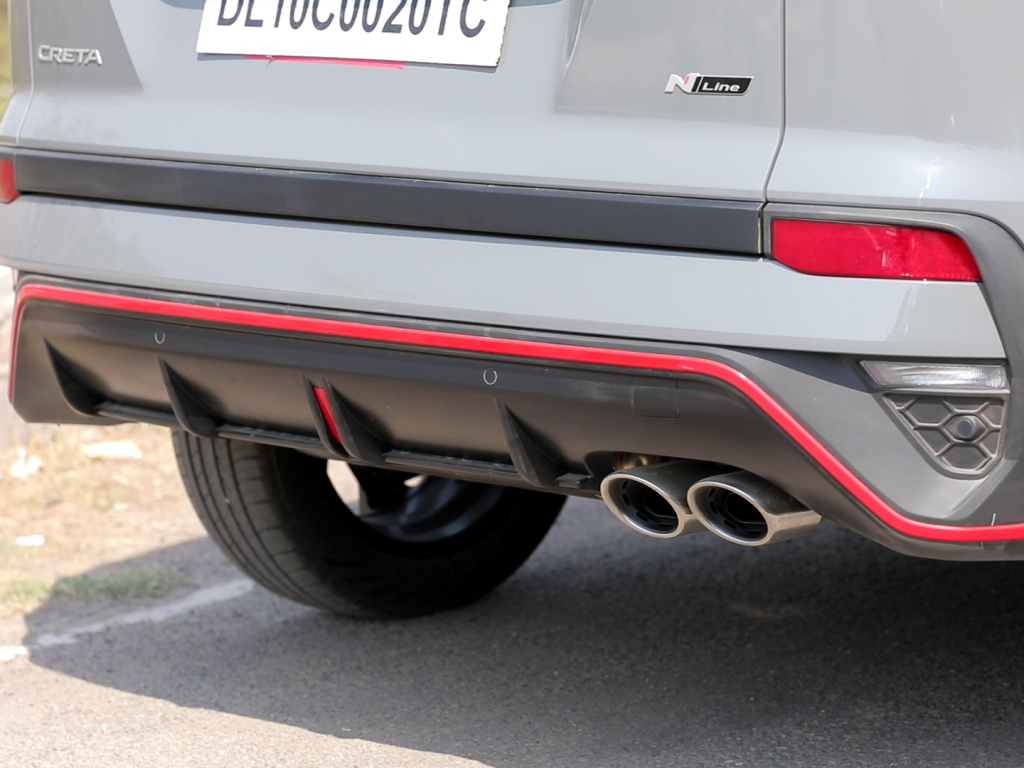
So, coming back to the main point, if you are considering the Creta as your next vehicle, the N Line makes a pretty good case for itself – standout visual appeal, comfortable people-hauling capability, and, not to mention, it’s a great way to jump the queue if you’re not one of the 80,000-odd people already on the waitlist!

